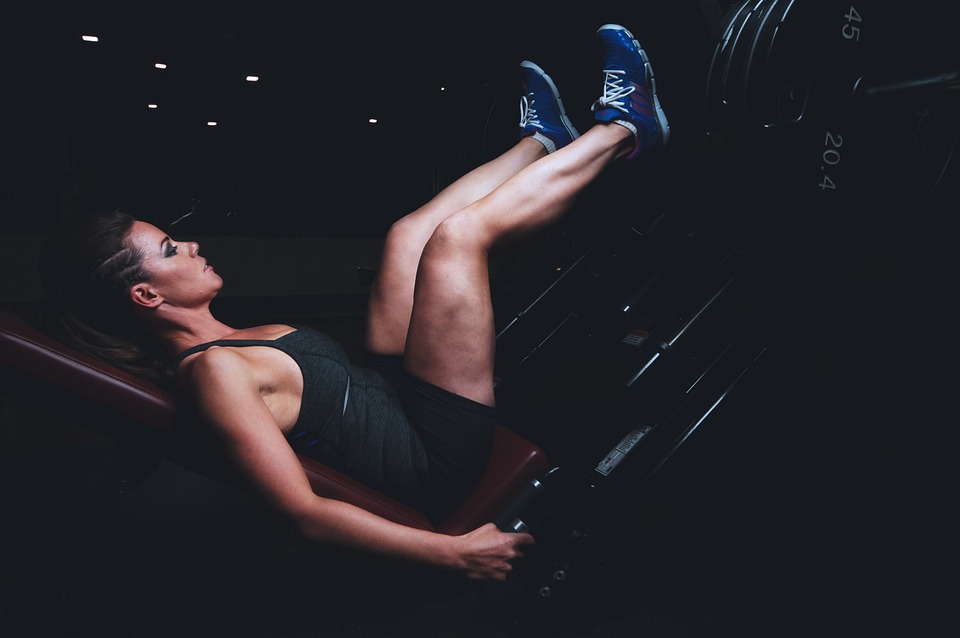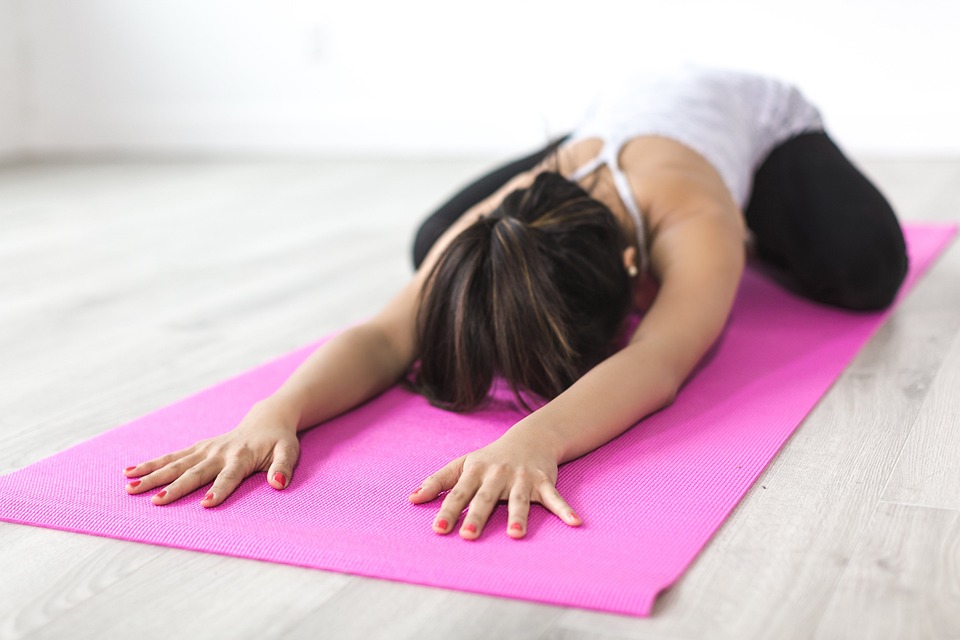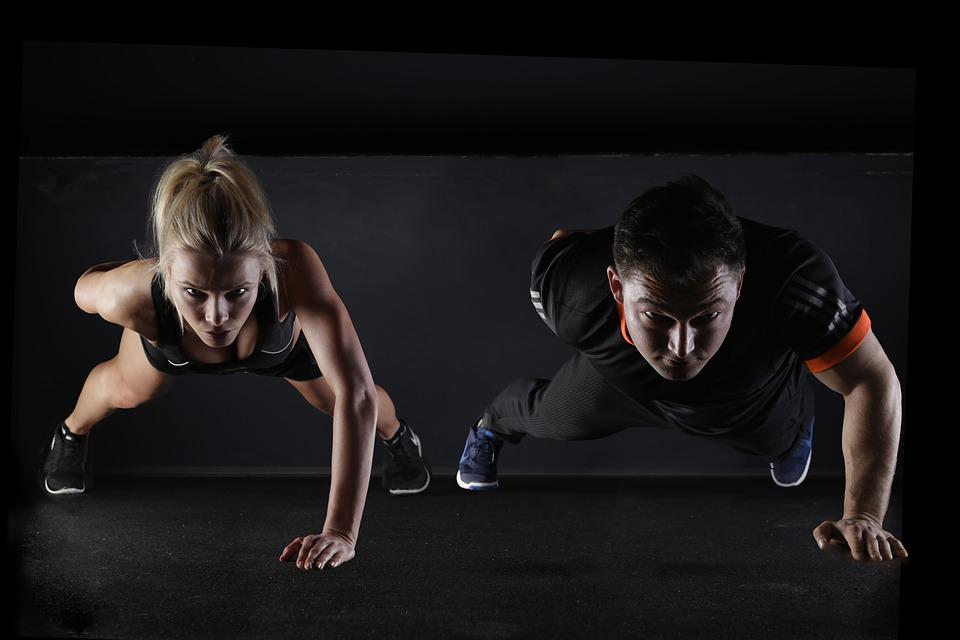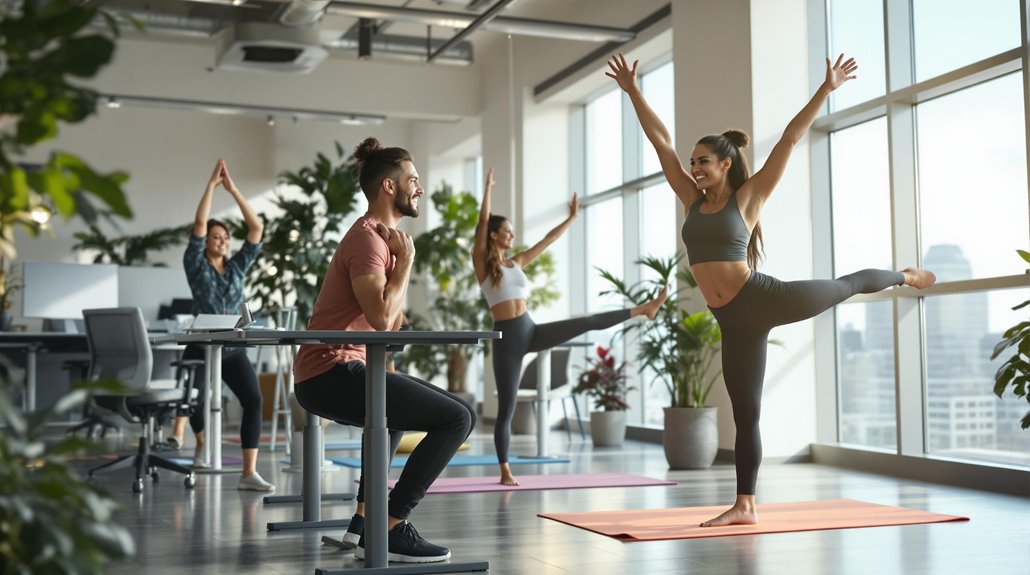
Incorporate daily workouts into your office routine to boost your productivity and physical health. Start with desk exercises like triceps dips or desk push-ups to tone arms and enhance energy. Engage your core with seated leg pull-ins and desk crunches. Don’t overlook lower body workouts such as chair squats and calf raises for leg strength. Add flexibility with shoulder blade pinches and neck stretches, reducing tension from prolonged sitting. Set daily activity goals by squeezing in short bursts of movement and tracking your progress. With these tips, you’ll discover more ways to stay active and healthy at work.
Desk Exercises
For office employees who spend long hours at their desks, incorporating desk exercises into your routine can enhance well-being and productivity. Imagine breaking free from the mundane desk-bound routine by embracing some simple and effective movements that liberate both body and mind. Sedentary behavior is linked to various health issues, emphasizing the importance of incorporating movement into daily routines.
Start with triceps dips, using your chair as a fitness tool to tone the back of your arms. Feel the energy flow as you perform a few desk pushups, leaning against your desk—a clear demonstration of innovative desk ergonomics coupled with productivity hacks. Experience a mood enhancement boost as you engage in these exercises, driving both personal and professional satisfaction.
Engage in shoulder blade pencil pinches, imagining your posture opening up, leading to enhanced breathing and focus. Rotate your neck gently, feeling the release of tension as you break free from stiffness. Hand and finger stretches can revive your creativity at those vital moments. Visualize your fingers spreading, releasing the mental chains of daily grind.
These desk exercises promote not just physical health but empower you to transform moments of stagnation into opportunities for revitalization. Embracing these productivity hacks is about reclaiming control—don’t let the desk imprison you when it can be your ally in freedom and efficiency.
Lower Body Workouts
Incorporating lower body workouts into your office routine can transform those sedentary hours into opportunities for enhanced fitness and energy levels. Engage your day with dynamic chair workouts like chair squats. Stand in front of your chair, dip into a squat, lightly tap the seat with your glutes, then rise again. Aim for 10-15 reps for an energizing start.
To liberate your legs from idle sitting, try seated leg extensions and calf raises. Extend one leg, hold, then switch; or lift your heels while seated to activate those calves. It’s important to utilize chairs and desks as supportive elements to enhance workout efficiency and ensure stability. Remember, regular exercise not only helps in maintaining muscle mass but also in improving mental health and overall well-being.
Feeling a bit adventurous? Pretend jump rope will surely lighten the mood. Hop and move your arms as if spinning an invisible rope.
Standing exercises can further revolutionize your routine. Classic squats, lunges, and staircase workouts invigorate even the most perennially anchored bodies. Amp up your day by squatting 20-30 times with your feet wider than shoulder-width apart or take the stairs instead of the lift, incorporating lunges and step-ups for a challenging climb.
Don’t overlook standing rear pulses; hold onto the desk, pulse your leg back for invigorating bursts of movement. Through these empowering exercises, you’ll feel more liberated and lively at work.
Upper Body Workouts

Transforming desk time into an opportunity for fitness isn’t just about moving from the waist down—your upper body craves attention too. Liberate your workday with a series of invigorating upper body workouts that defy the monotony of your deskbound routine.
Start with triceps dips using your chair; focus on engaging your arms and shoulders as you lower and lift. Embrace exercise variations like desk push-ups and wall push-ups to invigorate your chest and arms. Consistent engagement of type II muscle fibers can be achieved with explosive movements, offering an excellent way to maintain muscle mass.
For a dash of resistance training, harness the power of resistance bands with row exercises. Anchor them securely and pull, feeling the powerful engagement between your shoulder blades. Adding simple movements can significantly enhance your physical well-being, as consistent activity boosts energy levels and productivity throughout your day.
Seated arm raises are simple yet effective, offering you a chance to build shoulder strength discreetly from your chair.
Add intensity with tools like push-up bars to ease wrist strain or a weighted vest for those challenging wall push-ups. Keep safety at the forefront by ensuring your desk is sturdy enough for those energetic planks and push-ups.
Consistency and proper form are your best allies when turning short, high-energy sessions into lasting strength. Elevate your office hours with these dynamic upper body workouts and break free from the confines of sedentary living.
Core Strengthening Routines
Anyone spending hours at a desk knows that sitting too long can weaken your core—but thankfully, there are effective ways to counteract this. By incorporating specific exercises into your routine, you can enhance your core stability and improve your posture. Try the Seated Reverse Crunch: scoot forward in your chair, place your hands on the armrests, and draw your knees to your chest. This targets your lower abs and builds strength. Desk Crunches involve sitting on the edge of your chair, placing hands by your head, and curling forward, squeezing your abs as you exhale. Engaging in these exercises regularly is beneficial for maintaining adequate core stability and preventing posture-related issues. Elbows to Knees is another dynamic move where you twist your torso, bringing your opposite elbow toward your knee, engaging the obliques. Seated Leg Pull-Ins are another great option, where you engage your abs by drawing your knees to your chest while leaning back and repeating 20 times. For ultimate core stability, use the Chair Supported Plank Hold. With hands on your chair’s edge, maintain a plank, engaging those deep core muscles for 60 seconds. Don’t underestimate the seated exercises like the Magic Carpet Ride—lift your body slightly while cross-legged for an intense core engagement. Finally, adding rotational Chair Swivels not only strengthens the core but also enhances posture improvement.
Stretching Techniques
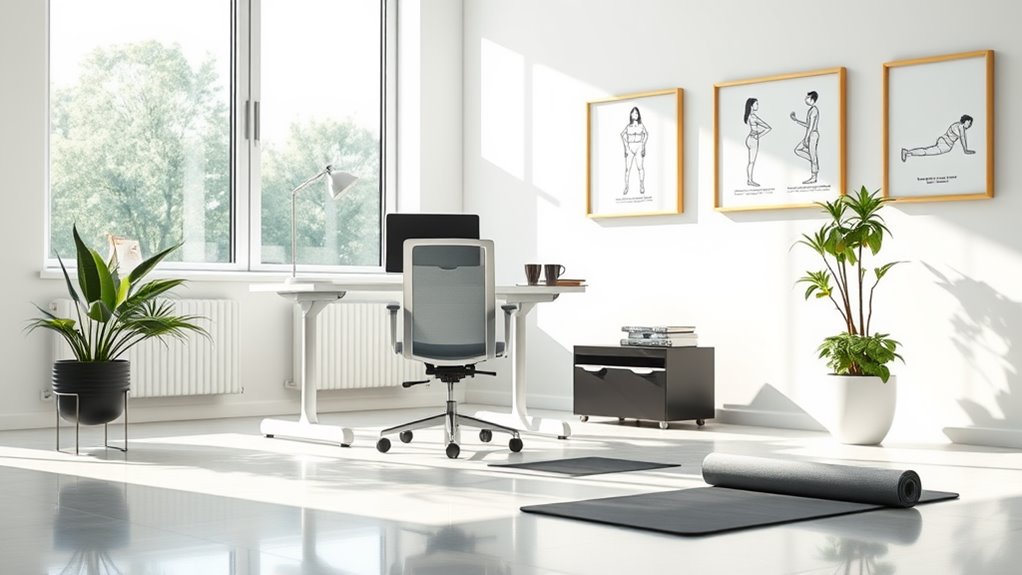
Stretching is a simple yet crucial practice to counteract the tension and stiffness that builds from long hours at a desk. By integrating dynamic stretching into your day, you’ll not only increase blood flow but also energize your mind and body.
Start with neck and shoulder stretches. Try the Tilt and Reach to relieve tension, and employ the Shoulder Clock Stretch to improve your range of motion. These techniques set your body free from prolonged sitting’s constraints.
For the spine and hips, incorporate recovery techniques like the Cat-Cow Stretch and the Seated Hip Stretch. These movements foster flexibility and can be liberating after hours of confinement in your chair. Engaging in exercise and physical activity can also enhance recovery from stress and reduce overall cortisol levels over time.
Feel the liberation as your spine gently awakens and your hips unwind, allowing for renewed agility.
Don’t overlook torso and arm stretches. Simple practices like the Overhead Reach offer a refreshing pause when energy wanes. By making these small, deliberate moves, you’re creating a roadmap to maintain liveliness and focus throughout the day.
- Dynamic Stretching: Invigorate with Tilt and Reach for neck relief.
- Recovery Techniques: Harness Cat-Cow’s gentle spinal release.
- Overhead Reach: Reclaim energy and mental clarity.
Integrate these techniques to thrive in any office environment.
Flexibility Exercises
Flexibility exercises are essential for maintaining a healthy range of motion, especially if you spend most of your day at a desk. Breaking free from stationary positions with dynamic stretching can transform your workday.
Release the benefits of flexibility to say goodbye to muscle fatigue, tension, and pain. Imagine the liberation of improved productivity and stress handling that comes from a few simple moves.
Start with a neck stretch: roll your head slowly from side to side, then forward, holding each position for a few seconds. Ease shoulder tension by rolling them forward and backward in circular motions five times each way.
For wrist flexibility, extend an arm palm up and gently bend the wrist down with your other hand, holding for 10-30 seconds.
Infuse more freedom into your day with a seated twist. Grasp the back of your chair, twist from your hips, gaze behind you, and exhale deeply.
Release your upper body with a shoulder stretch—raise an arm, palm facing a wall, then move it down your back. Remember to hold each position and breathe normally; the flexibility benefits will soon set you free.
Office Fitness Challenges
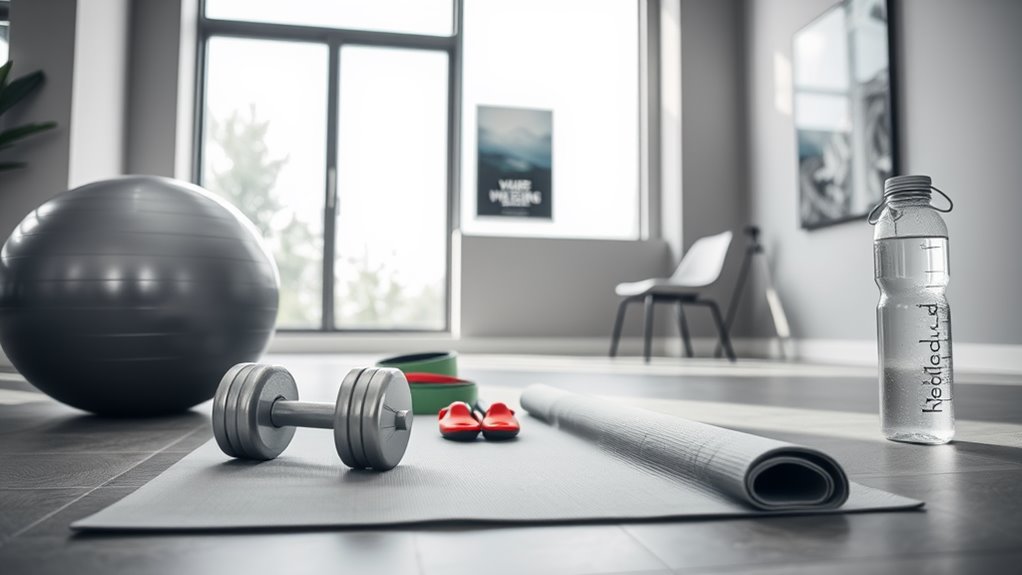
Office fitness challenges are a dynamic way to invigorate employees’ lives and workplaces. They offer a sense of liberation amid the daily grind by promoting health, teamwork, and motivation.
Among the most popular are step challenges, where you and your colleagues can compete individually or in teams to rack up as many steps as possible. Armed with fitness apps or devices, let the friendly rivalry boost your physical activity and spark a lively atmosphere at work.
Delve into healthy eating challenges that encourage you to choose nutritious meals and inspire camaraderie through sharing delicious, wholesome recipes. These challenges can renew your relationship with food and foster long-term healthy habits.
Engaging in such challenges won’t only enhance your well-being but also uplift your spirit, creating a vibrant and energized community at work.
Consider these exciting ideas:
- Step Challenges: Compete to take the most steps and track progress through fitness apps.
- Healthy Eating Challenges: Reward smart food choices and share recipes.
- Team-Based Competitions: Work with colleagues to accumulate active minutes and reach shared goals.
These challenges carry many benefits like increased motivation, improved health, and reduced absenteeism.
Embrace the change for a healthier, more spirited you!
Daily Activity Goals
When you’re looking to boost your health at work, setting daily activity goals can make a significant impact. Think of these goals as the anchor of your workday, ensuring you blend productivity with well-being.
It starts with realistic objectives like committing to 30 minutes of exercise daily. Break this time into short, high-frequency bursts, like desk push-ups or chair squats, making them easy to incorporate into your routine.
Use activity tracking to monitor your progress. It’s an empowering tool, showing you what you’ve achieved and where you can improve. Pair those exercises with nutritional balance to elevate your health game—balance is key. While moving is essential, so is fueling your body with the right nutrients.
Include flexibility exercises like standing torso rotations to keep your muscles nimble. Opt for active breaks: a brisk walk or taking the stairs, integrating movement seamlessly. Throw in some core exercises like planks for that extra edge.
Set your daily goals with workplace convenience in mind. The beauty of this approach is how it liberates you—offering consistent momentum without the pressure of perfection. Each step forward is a step toward a healthier, freer you.
Achieve Wellness With Consistency
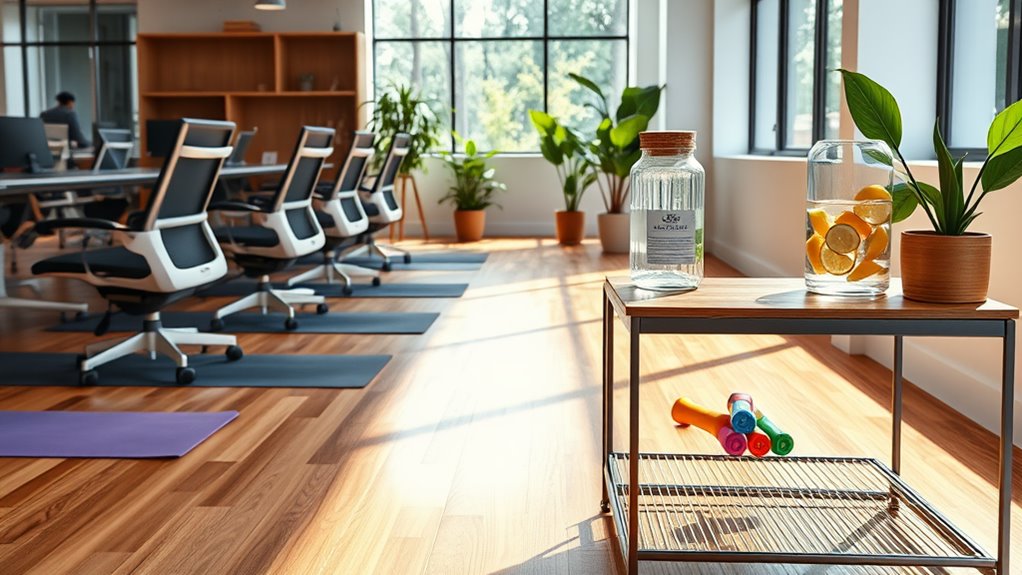
Bringing wellness into the workplace isn’t only achievable, it can be seamlessly integrated into your daily routine.
By incorporating a variety of desk exercises such as triceps dips, calf raises, and leg lifts into your workday, you stimulate blood flow and invigorate your muscles, all while staying productive.
Complement these with standing exercises.

